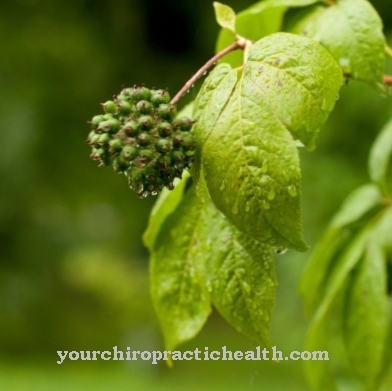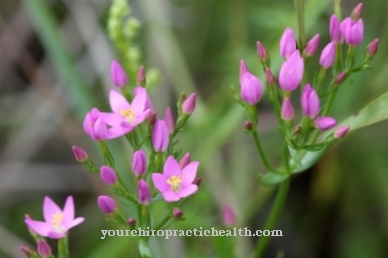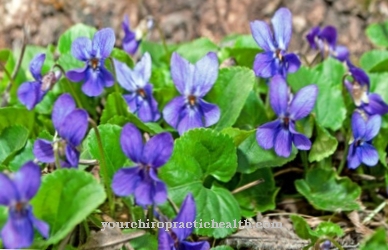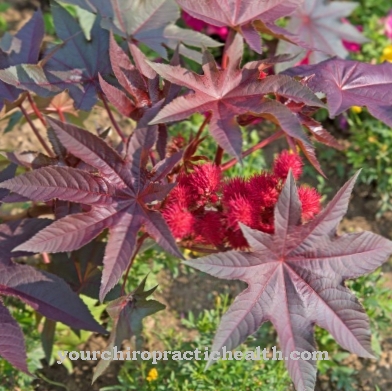Coltsfoot or Tussilago Farfara, is a species of plant in the Asteraceae family that has traditionally been used for medicinal products. Coltsfoot is a perennial herbaceous plant that spreads through seeds and rhizomes.
Occurrence & appearance of coltsfoot

The yellow flowers on 10-30 cm long, scaly stems appear in early spring, even before the dandelions bloom. The blue-green leaves, which resemble a hoof print in cross-section, usually appear only after the seeds have formed.
These are attached to silky umbrellas and are often used by small birds to line their nests. The hand-sized leaves with their thick, felt-like undersides appear in rosettes.
Coltsfoot originally from Europe and Asia and is listed as an invasive species in America. The plant prefers deserted habitats such as gravel and sand dunes, roadsides, wasteland, heaps or river banks. In gardens and pastures, coltsfoot is an annoying weed that is difficult to eradicate.
Application & use
The main medical uses of Coltsfoot mainly refers to the flowers (Farfarae Flos) and the leaves (Farfarae Folium), which are collected and processed separately.
The most important ingredients are flavonoids, about 8 percent mucilage (consisting of polysaccharides), pyrrolizidine alkaloids, about 10 percent tannins, zinc and vitamin C. The pyrrolizidine alkaloids, which are broken down in the liver, have a hepatotoxic effect, which is why the duration of use for leaves you have collected yourself must be limited. Growers usually use alkaloid-free varieties. The polysaccharides in coltsfoot have anti-inflammatory and immune-stimulating properties. The flavonoids also have an anti-inflammatory and spasmolytic (anticonvulsant) effect.
While the use of flowers is preferred in Asia, the use of leaves predominates in Europe. From these, especially the clean specimens exposed to the sun are collected, which are quickly cut up and dried or pressed. The pressed juice or prepared coltsfoot syrup can be taken directly or is used, for example, in cosmetics as an additive for shampoo to prevent dandruff.
In medical use, decoctions are mainly used as tea or for compresses. Older treatises also mention the use of coltsfoot as smoke by burning the dried plant on cypress charcoal. In earlier times, the dry leaves were also used as tinder, and in some regions the silky seeds were used to fill mattresses and pillows.
Significance for health, treatment & prevention
Coltsfoot has been used since ancient times to relieve diseases of the lungs and bronchi, which the botanical name Tusslilago = cough reflects.
Even if clinical research is quite divided on the effectiveness, the German BGA recommends coltsfoot tea for the treatment of inflammation of the mucous membranes in the mouth and throat and to relieve coughing irritations in catarrh of the bronchi. The flavonoids in coltsfoot have anti-inflammatory and antiseptic properties that help relieve cramps in the lungs in patients with asthma and bronchitis attacks, making breathing easier. The anti-inflammatory properties of the polysaccharides relax damaged lung tissue and have an expectorant and invigorating effect on the airways.
Classical natural medicine differentiates between the use of fresh and dried leaves. While fresh leaves or their juice are suitable for treating dry coughs or shortness of breath, applications of dry leaves should primarily be used by patients with pneumonia or chronic bronchitis. In addition to relieving coughs and bronchial congestion, coltsfoot is also effective in treating other conditions, such as: B. headache, asthma, irritation of the stomach and intestines, laryngitis and blockages of the nasal cavity.
Decoctions with elderflower can be used as moist compresses for swelling, inflammation or burns. Coltsfoot flowers are also part of ointments for the treatment of skin diseases such as eczema, wounds, inflammations or ulcers.
Treating coughs with herbal cigarettes, which mainly contain coltsfoot leaves in addition to other expectorant substances, is sometimes not advised, as the smoke irritates the affected mucous membranes again. Due to the unclear effects of the pyrrolizidine alkaloids, pregnant and breastfeeding women are not advised to take coltsfoot products.

























.jpg)


